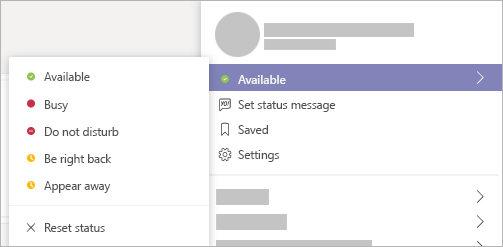Distance Doesn’t Have to be a Distraction
Tips, Tricks, and Best Practices for Working Remotely

Working from home is a skill. When people hone their craft, they run into obstacles unique to their personal situation as well as challenges endured by a great percentage of the remote workforce. As we adjust to the “old (not so new at this point) normal”, maintaining an engaged workforce is a common hurdle facing employers across the globe. The threat of the pandemic is still looming, and the quicker companies adopt best practices for working remotely, they help prevent their employees from becoming complacent and maintain productivity. Although stay at home orders and lockdowns will pass, the workforce and demand for office space will forever be changed. It is crucial that companies continuously test their remote capabilities and ensure efficiency won’t be reduced as a result of not being in an office. By leveraging our intensive experience and market research, Trexin has developed five different buckets (1. Employee Engagement, 2. Effective Meetings and Workshops, 3. Well-Being, Health and Effectiveness, 4. Technology, and 5. Communication) that capture and lay out crucial guidelines for having an effective and productive workforce. Although written to address employers, the content laid out in this article is relevant for both employees and employers alike.
EMPLOYEE ENGAGEMENT
Employee engagement can be characterized by how well-connected employees are to each other, and the relationship between an employer and its employees. Below are some tactics that can be leveraged to enhance employee engagement when face-to-face meetings are not possible.
- Check in Frequently with Your Team: As an employer, you often lack a clear view into the lives of your employees. The current situation can only exacerbate this problem as health, family, relationships, and additional anxiety can take a toll on the workforce. One way to address this is to check in more frequently with your colleagues on both professional and social levels to see what challenges they are facing and how their families are faring during this crisis.
- Mitigating Loneliness: Loneliness is one of the biggest struggles of working remotely. One way to mitigate loneliness is to make plans after work and having something to look forward to. While working in dispersed teams, you can’t always make plans to meet up with colleagues, but you can schedule video calls and go on walks with friends outside your professional circle. Also, form groups within your organization for a weekly social connection. Talk about the latest Netflix shows, boardgames, recipes, etc.
- Intentional Celebrations: Making a point to celebrate with your team builds relationships and paves the pathway for future successes and collaboration. Due to the fact organizations can’t have town-hall meetings if opting to work remotely, providing a monthly newsletter highlighting key wins (deals), birthdays, engagements, etc. will all help maintain an emotional connection across team members.
- Team Happy Hours: Team game nights and happy hours where work isn’t discussed are great ways to keep morale high, check in with your team and maintain a level of connectivity. Logging on and doing a show-and-tell with a drink of your choice (i.e. quarentini) and seeing familiar faces will help fill the void caused by the shutdown of bars and restaurants. Even when bars and restaurants open back up, virtual happy hours with colleagues or friends remain a great way to catch up and maintain your network throughout the years despite geographical divides.
EFFECTIVE MEETINGS & WORKSHOPS
Running effective meetings remotely requires significant planning, intention, and effort. Although challenging, teamwork and taking advantage of some of the guidelines below will help mitigate the distractions and drawbacks of remote meetings.
- Agenda: Prior to any meeting, internal or external, it is imperative to send out a meeting agenda with consistent structure and hit on these six components at the bare minimum:
- Time (consider time zones)
- What will be covered (meeting topics)
- Timeline (duration of each topic/activity covered)
- Attendee List
- Delegate pre-work/meeting prep responsibilities (ex. reading material)
- Roles and Responsibilities
- Ice Breaker: Participants in virtual workshops and meetings will be much more engaged and collaborative if they are comfortable with one another. Take a minute at the beginning of the meeting to get to know everyone and give a minute update about what is going on in your life professionally and personally.
- Facilitator’s Role: In every in-person meeting, there is the role of the facilitator/moderator, and that doesn’t change with a virtual meeting. As a matter of fact, this role is even more important and amplified. The facilitator should be very articulate and align participants on the common goal or purpose of the meeting, direct the flow and energy of the meeting, ensure all agenda items are covered, and stick to the time-boxed agenda. The facilitator should also have technological control of the meeting. In the circumstance that there is background noise coming from participants, or they are talking out of turn, moderators should have the ability to mute individuals. If the workshop gets a little heated, the facilitator should lead participants in a “respond and react” discussion, allowing no more than two to three minutes per participant. If a participant begins to ramble or go down a rabbit hole and is not contributing to the common purpose of the meeting, the facilitator should cut them off and lead the conversation back to the topic at hand.
- Guiding Principles: In our experience, “guiding principles”, although a bit elementary at times, can be very effective as they set clear-cut expectations as to how the meeting will go (when to participate, how to digest the material, respect for other’s voice, etc.), limiting surprises down the road. Others like to refer to Guiding Principles as Rules of Engagement. Participants in a virtual workshop should be explicitly told in the beginning of the meeting/workshop (better yet: in a pre-read) what the expectation of their participation is: contribution of new ideas, live discussion, sole listening, etc.
- Leave Time to Reflect: Leaving time to delegate action items and reflect on the meeting is very valuable and will help companies improve their virtual meetings as they go along.
- Turn on Video: Although uncomfortable at times, video conferencing improves engagement and collaboration as people can’t hide as effectively. Audio conference calls are an easy way to join but be unnoticed and not speak if one doesn’t wish to contribute or is shy at times.

- Avoid an Oopsies: If it hasn’t happened to you yet, hopefully it never will. While we switch between video conferences and dial-ins, sometimes we forgot when our camera is on. When video conferences begin, the facilitator should announce that everyone is on camera. At any point in the meeting someone looks like they may have forgotten they are on camera, it is okay to gently remind the group by saying something like, “I just want to remind everyone that we’re all on camera now so please focus on what is being discussed and presented…” Your colleague will be very appreciative of the reminder and will be focused the remainder of the meeting.
- Bring the Virtual Workshop to Life: As we all know, workshops are held to brainstorm innovative ideas with colleagues and whiteboards and post-its are extremely useful for these purposes. The virtual meeting platform Zoom™ allows participants to collaborate and annotate on a shared whiteboard. Please see this link to view a tutorial on how to facilitate virtual whiteboards. Zoom™ also has a polling feature that allows single choice or multiple choice polling questions for participants during meetings. Polls can be launched on the spot or prepared prior to the meeting. Polls can be conducted anonymously or with participant names. This is a great feature to use during online meetings to gather a quick consensus from the crowd.
- Creative Ways to Keep Participants Engaged: Virtual meetings should be kept to no more than one hour. If content and discussions must go beyond this time frame, schedule breaks, consider breaking up the meeting to an AM and PM session, or even spread the meeting over a few days. Another strategy to keep participants engaged is to have little quizzes throughout the meeting. Utilize Zoom™’s polling feature to quiz participants on topics and first place takes home a $5 Starbucks e-gift card! Recognizing and rewarding focus and contribution will go a long way in virtual workshops and meetings.
WELL-BEING, HEALTH, & EFFECTIVENESS
Being healthy and happy is a key factor to being effective at work. With that said, mental health can often be overlooked or go unaddressed. When co-workers are dispersed, paying a little extra attention to the health of your employees becomes that much more important and can go a long way.
- Be Supportive and Flexible: Just as we are facing unprecedented times, your employees may be dealing with unprecedented constraints and responsibilities. As childcare services, summer camp, and physically going to school are no longer options, parents are faced with an unexpected strain on their schedules and bandwidth at home. As employers, it is important to remain flexible and supportive ensuring that everyone’s needs are met. As long as people are following through on their work, allowing them to work on their schedule will benefit everyone and keep employee morale high.
- Remember We’re Still Human: Just because we are no longer in the office, we still need to find ways and the time to do some of the same things as we did when we were in the office. Below are just a few of those activities, and as an employer you are responsible for setting the tone and remote culture that will allow your staff to take the time to remain sane and be guilt-free while doing so:
-
- Coffee Breaks: When 30-minute coffee breaks were a regular occurrence at the office and weren’t associated with laziness, it is silly that now just because we are at home, we feel guilty about being away from our computer for five minutes. Take your breaks, drink your coffee, and don’t feel guilty.
- Have Regular Meals: Unless necessary, try not to bring your laptop with you when you go eat. You would normally go and socialize with a friend over lunch so why not take 30 minutes or so to unplug and call a friend or loved one before getting back to work.
- Exercise Regularly: Getting out for a walk or even doing 15 minutes of core in your living room are necessary to maintain strong mental health. Not to mention, work performance will suffer if you let yourself be cooped up at your desk all day.

-
- Create Mental Boundaries: As remote workers lack a transition from going to work and coming home, it is extremely important to check in and out mentally to change mindsets. Make sure you have a workspace that is clean and organized, but don’t confuse it with a place to eat or online shop. Developing this mental divide between your social and professional life is critical to success and continued productivity during these tough times.
- Shower and Get Some Pants On: Whether you believe it or not, showering first thing in the morning, getting dressed and pretending as if you were going into an office will do wonders for you in terms of efficiency and mental sharpness. One study published by Columbia University states that “wearing formal clothing enhances abstract cognitive processing” as research participants showed an enhanced global processing advantage when wearing formal clothes. Furthermore, regarding the benefits of starting your workday with a shower – Shelly Carson, Ph.D., a psychology lecturer at Harvard University says that showering in the morning can act as an enhanced incubation period – the scientific term for the time between getting a problem and resolving it. While in the shower, your cognitive activities relax and regenerate – allowing your most creative and insightful ideas rise to the surface.
- Commute to Your Home Office: Related to the mental boundaries discussed above, emulating your normal commute to the office also helps set your mind for the workday. Before you sit down at your home office, take a walk around your block as your “commute.” When your workday comes to an end, take another walk around the block. When you get home, your work is finished and it is time to cook dinner and connect with your family or friends.
TECHNOLOGY
Chat systems, connectivity and audio quality are all significant barriers to remote work. Without the proper communication system and infrastructure in place, productivity and efficiency at work will fall by the wayside.
- Your IT Team Went from Being Super Important to CRITICALLY IMPORTANT: Being effective remotely starts with making sure that everyone is comfortable with the technology and has the appropriate equipment. Employers need to make sure people are getting what they need from the IT team because without a strong remote communication system in place, companies will have an incredibly difficult time following through on many of the guidelines listed in this article and making it through the pandemic.
- Stipends: Many companies are providing $200-$300 worth of a technology stipend to encourage people to create a solid workspace at home. It could mean a new monitor, mouse, or headset – but often employees feel guilty asking, which is why it is very important to provide the stipend. At the end of the day, even if it’s not used, employees will walk away with the feeling that their employer cares about them and wants to put them in a position to succeed which can go a long way.
COMMUNICATION (INTERNALLY & EXTERNALLY)
How we talk, chat, email, and respond to colleagues or clients are under a microscope more than ever when interactions and operations are dispersed and not face-to-face.
- Cold Call on Your Staff: Despite giving some PTSD from High School English class, calling people by name on the phone, over video conferences, and in emails will help employers ensure that their staff is on their toes. When your presence in a meeting has been reduced to an icon, it is easy to hide behind your computer and not contribute to the conversation. In addition to maintaining awareness and engagement, top performers will get the recognition they need at a time when feeling empowered has never been more difficult.
- Three Types of Distance: According to Erica Dhawan and Tomas Chamorro-Premuzic from the Harvard Business Review, there are three types of distance in remote collaboration: physical (place and time), operational (team size, bandwidth and skill levels), and affinity (values, trust, and interdependency). Managers should prioritize minimizing affinity distance by part taking in video calls and virtual team building exercises which builds rapport and chemistry.
- Effective Instant Messaging (IM): As stopping by someone’s desk or office is not an option at the moment and may be going out of fashion, treat chatrooms and tools such as Skype™ and Microsoft Teams™ as virtual offices. Encourage your employees to take advantage of the features that these systems have to offer such as statuses, file sharing, chat groups, and calendars. Back to the statuses – to get an idea of what the symbols could mean – use the below guide to drive IM etiquette. Once everyone is on the same page and there is a mutual understanding, communication will flow and people won’t waste time deliberating as to whether they should bother someone or not:
-
- Available (green): “Call me, I’m free”
- Busy (red): “Tied up with a project or on a call, feel free to drop me a note and I’ll see it when I free up”
- Do Not Disturb (red with a slash through): “I am presenting, don’t message or call as it will be disruptive”
- Be Right Back (yellow): “I’m grabbing coffee, leave me a message and I’ll see it in a few minutes when I get back to my desk”
- Appear Away (yellow): “I am breaking for lunch, don’t expect a response unless urgent”

-
- Be Responsive with Clients – Not a Workaholic: When dealing with clients remotely, reliability and responsiveness have never been more crucial. However, that does not mean working around the clock and at all hours of the night. Make sure that you give your clients and customers your cell phone and preferred method of contact. Encourage them to text or call whenever they would like. With that said, being responsive doesn’t always mean stop whatever you’re doing to have a 90-minute conversation about budgets and forecasts. It could very well mean calling them for 30 seconds to inform them you are tied up at the moment but you would be happy to schedule time later on in the day to chat.
We hope that these insights are helpful and that at the bare minimum provide some guidance as you create your own methodologies for how to effectively work remotely and manage people. For any follow-up questions, comments, or concerns – please reach out to Trexin Consulting as we would love to continue the conversation.
References:
Bolton, Robert. “Leading Practices for Remote Working.” KPMG, KPMG, 27 Mar. 2020, home.kpmg/xx/en/home/insights/2020/03/leading-practices-for-remote-working.html.
Dhawan, Erica, et al. “How to Collaborate Effectively If Your Team Is Remote.” Harvard Business Review, 4 Mar. 2020, hbr.org/2018/02/how-to-collaborate-effectively-if-your-team-is-remote.
“Engaging Your Employees in Response to Coronavirus.” EY, www.ey.com/cn/en/services/people-advisory-services/ey-engaging-your-employees-in-response-to-coronavirus.
Nizhebetskiy, Dmitriy, and Dean Phillips. “Ultimate Guide to Effective Team Meeting – PM Basics.” Become a Project Manager, 31 Jan. 2018, pmbasics101.com/ultimate-guide-effective-team-meeting/.
Prokopets, Marie. “11 Best Practices for Working Remotely.” FYI, 14 Apr. 2020, usefyi.com/remote-work-best-practices/.
rachel-nussbaum-1596-user. “When’s the Best Time to Shower: Morning or Night?” Greatist, Greatist, 17 Jan. 2020, greatist.com/grow/best-time-to-shower#1.
Slepian, Michael L., et al. “The Cognitive Consequences of Formal Clothing – Michael L. Slepian, Simon N. Ferber, Joshua M. Gold, Abraham M. Rutchick, 2015.” SAGE Journals, journals.sagepub.com/doi/abs/10.1177/1948550615579462.
“Virtual Chemistry: Encouraging Collaboration When Working Remotely.” Deloitte United States, www2.deloitte.com/us/en/blog/business-chemistry/2020/virtual-chemistry.html.



